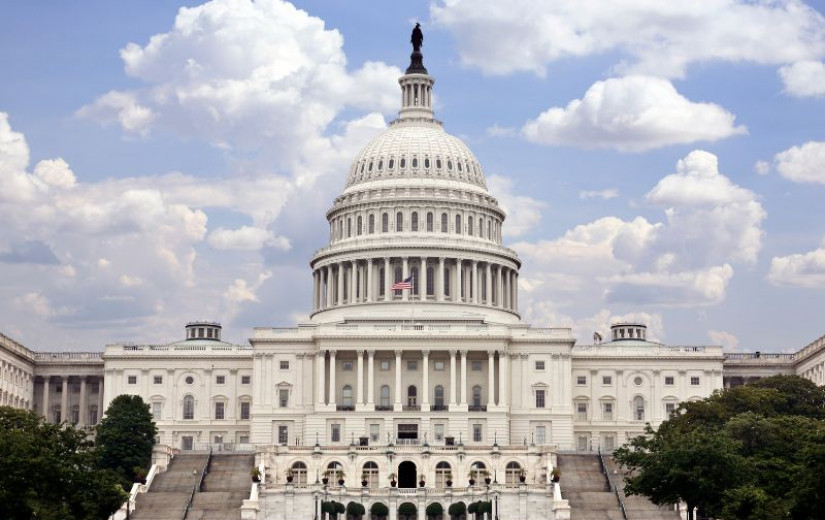
A sweeping tax and spending bill recently passed by the U.S. House of Representatives proposes to overhaul the delivery and access to safety-net health programs in Oregon and across the country.
The proposal — branded by President Donald Trump as the “big, beautiful bill” — would alter Medicaid rules and introduce new restrictions on health care coverage, while also extending prior tax cuts and boost funding for immigration enforcement. A preliminary estimate from the nonpartisan Congressional Budget Office said the package would trim at least $700 billion in federal Medicaid spending over the next 10 years.
While the bill still needs to make its way through the Senate, the version approved by the House offers the clearest picture yet of the direction federal lawmakers may take — and how that could ripple across Oregon.
Here’s what’s in the bill and what it would mean for Medicaid in Oregon.
New work requirements for childless adult Medicaid recipients without disabilities
One of the bill’s major provisions would require childless adults aged 19 to 64 who qualify for Medicaid coverage through the Affordable Care Act’s expansion to show proof that they work, attend school, or participate in community service at least 80 hours per month to keep their benefits. Individuals caring for dependents, as well as people with disabilities, would be exempt.
These requirements would have to go into effect by the end of 2026.
Oregon expanded Medicaid under the Affordable Care Act to include individuals earning up to 138% of the federal poverty level. According to KFF, a nonprofit health policy think tank, about 641,000 Oregon adults are covered under this expansion.
An analysis by the Urban Institute projected that work requirements, if implemented, could result in at least 99,000 Oregonians losing Medicaid coverage — either due to non-compliance or because of the administrative burden in trying to prove they do.
Emma Sandhoe, director of the Oregon Health Authority’s Medicaid division, said these work requirements and exemptions would not only be “incredibly difficult” for the state to implement, but also adds more hurdles for individuals who would qualify for the program. For example, she said, the state does not have access to data that would notify them whether an individual has enrolled in an education program or become pregnant — cases in which they would qualify for Medicaid coverage regardless of work status.
“We don’t always know when a person is pregnant, even the person might not always know right away if they are pregnant,” she said. “So, we may inadvertently remove that person from coverage because they don’t meet that work requirement, and then they lose their access to their health care services. ... They have to go through the process of re-enrolling, which can take a long time.”
More frequent eligibility checks
Oregon currently conducts Medicaid eligibility reviews every two years — a timeline state officials say is intended to minimize administrative burden and maintain continuous coverage.
This approach, unique among states, was made possible by federal approval and backed by research on the problem of “churn” — when people lose coverage temporarily due to paperwork issues rather than a change in eligibility.
The House bill would reverse that flexibility, requiring states to verify Medicaid recipients’ eligibility every six months. The provision is intended to prevent people from receiving benefits they’re no longer eligible for, but more frequent checks could create additional hurdles for people who still qualify but struggle with the added paperwork or lose coverage by mistake.
“There are a variety of levers in this bill designed to reduce the number of people covered and make it harder to get and stay insured,” Sandoe said. “That’s different from the approach that Oregon has taken over the last couple decades, which has focused on lowering the uninsured rate by reducing barriers to enrollment for those who qualify.”
Sandoe said most Oregonians who lose Medicaid coverage do so not because their income increases, but due to administrative issues — such as missed mail or confusion around renewal forms.
“We know that most people unfortunately don’t lose their Medicaid coverage because their income goes up. People tend to stay around the same income for long periods of time,” Sandoe said. “It’s people who didn’t get all their paperwork done, because they didn’t open their mail in time or didn’t get their mail because they moved addresses.”
Studies have shown that policies minimizing churn improve health outcomes by ensuring more consistent access to primary and preventive care. Sandoe said this stability helps people stay healthier and reduces long-term health care costs.
KFF estimates that changes proposed in the bill — including more frequent eligibility checks — could increase the number of uninsured Oregonians by roughly 210,000, though actual outcomes would depend on how Oregon implements any new federal requirements. Oregon has one of the highest insured rates in the nation, with roughly 97% of residents covered, according to the Oregon Health Authority.
Restrictions on state’s Medicaid financing flexibility
Oregon, like many states, levies a tax on health providers — like hospitals, insurers and managed care organizations — and uses that money to leverage higher amounts of federal Medicaid funding.
Hospitals in Oregon currently pay a 6% tax on net patient revenue, while insurers pay a fee based on their net premiums. These taxes are a significant component of the state’s Medicaid financing strategy, which relies on federal funds for about 70% of its Oregon Health Plan budget.
Hospitals benefit from the system because their contributions are matched with federal dollars and redistributed back to them in the form of supplemental payments. These payments help offset the financial gap created by low Medicaid reimbursement rates — currently about 54 cents for every dollar spent on care, according to the Hospital Association of Oregon.
The House bill would freeze these provider taxes at current levels, meaning Oregon wouldn’t be able to increase them or create new ones for the purpose of securing more federal matching funds.
Sandoe said this provision of the current bill is expected to have minimal impact on Oregon’s hospitals, since the state’s existing provider taxes are “essentially grandfathered in.” But the long-term implications for Oregon’s Medicaid financing would depend on how the freeze is implemented and whether exemptions or alternatives are introduced during Senate negotiations, she said.
Becky Hultberg, president and CEO of the Hospital Association of Oregon, said in a statement that Oregon’s hospitals are already struggling to remain financially viable.
“The Medicaid reductions contemplated by Congress could tip fragile hospitals over the edge, affecting the ability of Oregon patients to get the health care services they rely on,” Hultberg said.
Restrictions on Medicaid-covered services
The bill also includes provisions that would prohibit federal Medicaid dollars from being used to cover gender-affirming care, including hormone therapy, puberty blockers and surgeries for individuals of all ages.
This would directly conflict with Oregon law, which requires coverage of medically necessary gender-affirming treatments through the Oregon Health Plan.
State officials say nothing has changed for now. “Recent federal actions have not changed Oregonians’ access to gender-affirming care, which is protected by Oregon state law,” the Oregon Health Authority said in a statement.
The agency added that it’s closely watching federal developments and will continue following Oregon’s laws “when it comes to protecting access to quality health care and improving the lifelong health of everyone in our state, including transgender and gender-diverse people.”
Another part of the bill seeks to cut off federal Medicaid funding to Planned Parenthood and other clinics that provide access to abortion services not allowed under the Hyde Amendment.
Critics argue the measure could jeopardize access to reproductive and family planning care, but also basic health services. Alexis McGill Johnson, president and CEO of the Planned Parenthood Action Fund, said in a statement that punishing Planned Parenthood for providing abortion care risks cutting off millions of people from basic care like affordable birth control, wellness exams and cancer screenings.
Penalties for states providing health coverage for immigrants
Oregon has a state-funded program, called Healthier Oregon, that provides full Medicaid coverage to about 100,000 immigrants regardless of their legal status.
The House bill includes a provision that would penalize states for offering coverage to immigrants without legal status — including those with a green card but haven’t met the Medicaid eligibility criteria — by reducing the federal reimbursement for people covered under Medicaid expansion. Currently, the feds pick up 90% of the bill, but states that run afoul of this provision would see that rate drop to 80%.
The Oregon Health Authority estimates that this reduction could cost the state $600 million annually — or about $7 billion over 10 years. The state would then face a choice: absorb the cost difference, scale back coverage, or modify eligibility criteria for the program.
-- Kristine de Leon covers consumer health data enterprise stories. Reach her at kdeleon@oregonian.com.
If you purchase a product or register for an account through a link on our site, we may receive compensation. By using this site, you consent to our User Agreement and agree that your clicks, interactions, and personal information may be collected, recorded, and/or stored by us and social media and other third-party partners in accordance with our Privacy Policy.








